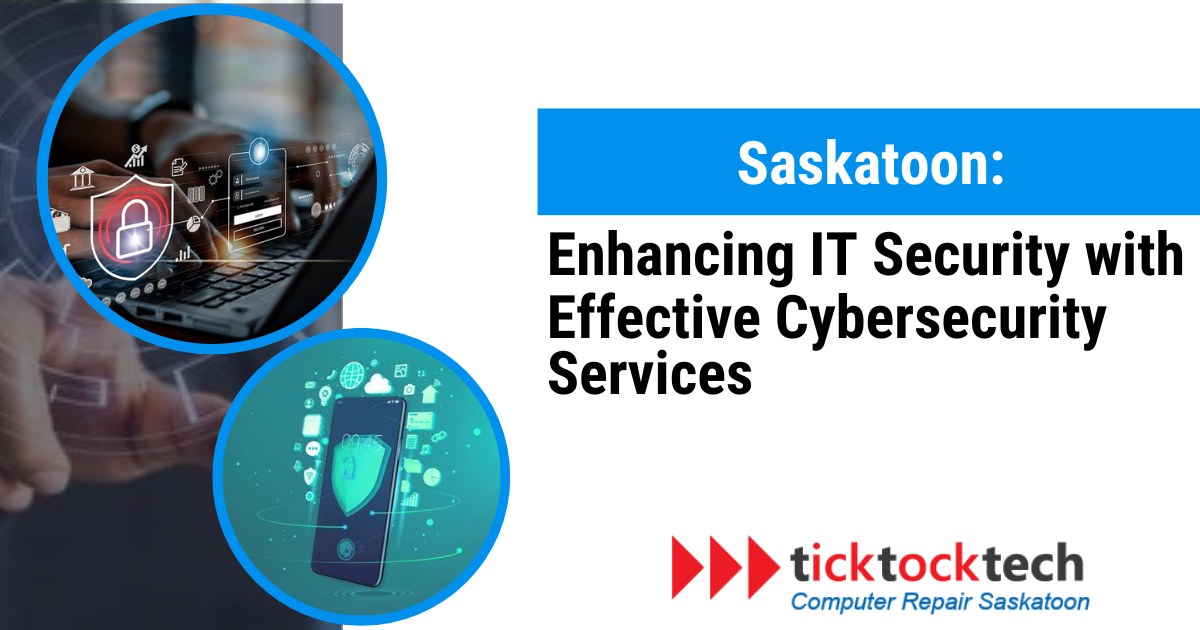In today’s digital age, where technology has become an integral part of our personal and professional lives, the importance of IT security cannot be overstated. The increasing frequency and sophistication of cyber threats pose a significant risk to businesses, government organizations, and individuals alike. To combat these threats, effective cybersecurity services have become a cornerstone of safeguarding sensitive data and maintaining the integrity of digital ecosystems.
Cybersecurity is the technique of preventing unwanted access to data centers and other computerized systems by protecting internet-connected systems, including hardware, software, and data, from cyber threats. Both individuals and businesses employ cybersecurity. This article explores the vital role of cybersecurity services in enhancing IT security and offers insights into the strategies and tools that can help protect against cyber threats.
The Evolving Landscape of Cyber Threats
As technology continues to advance, so do the methods employed by cybercriminals. The threat landscape is constantly evolving, and new attack vectors are being discovered regularly. From traditional threats like viruses and malware to more recent threats such as ransomware, phishing attacks, and sophisticated hacking techniques, organizations must stay vigilant to protect their digital assets.
Cyberattacks are not limited to large corporations or government agencies. Small and medium-sized businesses, as well as individuals, are increasingly becoming targets of cybercriminals. The financial, reputational, and legal consequences of a successful cyberattack can be devastating. An organization’s or user’s systems and sensitive data can be effectively protected against malicious assaults that aim to access, modify, erase, destroy, or extort them by implementing a robust cybersecurity plan. Therefore, enhancing IT security is a paramount concern for all.
The Role of Cybersecurity Services
Effective cybersecurity services play a pivotal role in safeguarding data, systems, and networks from cyber threats. These services encompass a wide range of activities and measures designed to identify, prevent, mitigate, and respond to cyberattacks. Let’s delve into some key aspects of cybersecurity services that contribute to enhancing IT security

Related: How to Report Cybercrimes in 2023
1. Threat detection and prevention
Cybersecurity services often begin with threat detection and prevention. This involves monitoring network traffic, systems, and user behavior to identify unusual or suspicious activities. Intrusion detection systems (IDS) and intrusion prevention systems (IPS) are essential tools in this process. By proactively identifying threats, organizations can take steps to prevent potential breaches.
2. Firewalls and network security
Firewalls are a fundamental element of IT security. They act as a barrier between an organization’s internal network and the outside world, filtering incoming and outgoing traffic. Configuring firewalls correctly and keeping them up-to-date is essential for safeguarding the network.
3. Data encryption
Data encryption ensures that sensitive information is protected, even if it falls into the wrong hands. Cybersecurity services often include encrypting data at rest and in transit. This minimizes the risk of data breaches, especially when data is transferred over networks or stored in the cloud.
4. Vulnerability assessment
Regular vulnerability assessments are crucial for identifying weaknesses in an organization’s IT infrastructure. Conduct penetration tests and security audits to uncover vulnerabilities that malicious actors could exploit. Once you identify them, you can address these vulnerabilities to strengthen security.
5. Incident response
Despite the best preventive measures, security incidents can occur. Cybersecurity services provide incident response plans that outline the steps to take when detecting a security breach. Effective incident response minimizes damage and helps in recovery.
6. User training and awareness
One of the weakest links in cybersecurity is often human error. Cybersecurity services emphasize the importance of educating and training employees and users about best practices, including recognizing phishing attempts and maintaining strong password hygiene.
7. Endpoint Cloud security
Protecting end-user devices (e.g., computers, and smartphones) is essential. Endpoint security solutions include antivirus software, intrusion detection, and device management to ensure that these devices are not vulnerable entry points for cyberattacks.
As more organizations migrate to the cloud, cloud security has become a vital component of cybersecurity services. This involves securing cloud-based applications, data, and infrastructure to prevent data breaches and unauthorized access.
8. Security updates and patch management
Keeping software, operating systems, and applications up to date is critical. Cybersecurity services involve regularly applying security patches and updates to address known vulnerabilities.
Choosing the Right Cybersecurity Service Provider
Selecting the right cybersecurity service provider is a critical decision for any organization or individual looking to enhance their IT security. Here are some factors to consider when choosing a cybersecurity service provider:

1. Experience and expertise: Look for a provider with a track record of successfully defending against cyber threats. Experienced professionals are more likely to understand the evolving threat landscape and employ effective strategies.
2. Customization: Cybersecurity needs vary depending on the organization’s size, industry, and specific challenges. Choose a provider that can tailor their services to meet your unique requirements.
3. Reputation and references: Check for reviews and references from previous clients. A provider with a positive reputation is more likely to deliver quality services.
4. 24/7 monitoring and support: Cyber threats can strike at any time. Ensure that your service provider offers round-the-clock monitoring and support to respond to incidents promptly.
5. Scalability: Your cybersecurity needs may change as your organization grows. A good provider should be able to scale their services to accommodate your evolving requirements.
6. Cost-effectiveness: Consider the cost of services concerning the value they provide. A balance between affordability and robust security measures is essential.
The Future of Cybersecurity Services
The landscape of cybersecurity is ever-evolving, and as technology continues to advance, new challenges and threats will emerge. As a result, cybersecurity services will continue to evolve to address these challenges. Here are some trends that are likely to shape the future of cybersecurity services:
1. Artificial intelligence and machine learning: AI and machine learning technologies are being employed to enhance threat detection and response. These technologies can analyze vast amounts of data in real-time to identify anomalies and potential threats.
2. Zero trust architecture: The concept of “Zero Trust” assumes that no one, whether inside or outside an organization, should be trusted by default. This approach emphasizes strict access controls and verification for every user and device trying to access resources.
3. Quantum-Safe Cryptography: With the advent of quantum computing, traditional encryption methods may become vulnerable. Researchers are developing quantum-safe cryptography to secure data in the post-quantum computing era actively.
4. IoT security: As the Internet of Things (IoT) continues to grow, the security of IoT devices and networks will become a major concern. Cybersecurity services will need to adapt to protect these interconnected devices.
5. Regulatory changes: Governments worldwide are enacting stricter data protection regulations. Compliance with these regulations will continue to be a significant focus for cybersecurity services.
Conclusion
Enhancing IT security with effective cybersecurity services is no longer optional; it’s a necessity in our digitally connected world. The evolving threat landscape requires organizations and individuals to invest in comprehensive cybersecurity measures, which encompass threat detection, prevention, response, and ongoing monitoring. Choosing the right cybersecurity service provider and staying informed about emerging trends in cybersecurity will be key to mitigating risks and safeguarding digital assets in the future. As technology advances, so must our commitment to cybersecurity to ensure a safer and more secure digital environment for all.
FAQs
The technique of preventing theft, damage, or illegal access to computer systems, networks, and data is known as cybersecurity. Because it protects digital assets from several cyber threats and guarantees the confidentiality, integrity, and availability of data, it is crucial for IT security.
Threats such as malware, ransomware, phishing attempts, data breaches, hacking, and distributed denial of service (DDoS) assaults can all be defended against with the use of cybersecurity services.
Through a variety of techniques, including threat detection, firewalls, encryption, vulnerability assessments, and user training, cybersecurity services stop cyberattacks. These services seek to recognize, lessen, and address threats before they have the opportunity to do damage.
When choosing a cybersecurity service provider, consider their experience, reputation, ability to customize services, 24/7 support, scalability, and cost-effectiveness. References and reviews from previous clients can also be valuable indicators.

